12 hrs ago – The Ringer (blog)
 They say it’s impolite to talk about money, but when we do, we often talk about it in normative terms — right and wrong, black and white. In sports, that means talking about “bad” contracts — players who are overpaid relative to their production. As a fan, this line of thinking is understandable in a league with a salary cap: If the Dallas Mavericks are paying Erick Dampier like he invented Facebook, and Erick Dampier’s scoring six points a game, they can’t spend that money on better players. Even in baseball — which doesn’t have a hard salary cap, but where spending is constrained by teams’ desire to turn a profit and then constrained even further in some cases by the luxury tax — the concept applies. Albert Pujols is on a bad contract. Miguel Cabrera is on a bad contract. Ryan Howard was on a bad contract until his bad contract burst out of its horcrux and consumed his soul, at which point Howard ceased to be a man and became a bad contract.
They say it’s impolite to talk about money, but when we do, we often talk about it in normative terms — right and wrong, black and white. In sports, that means talking about “bad” contracts — players who are overpaid relative to their production. As a fan, this line of thinking is understandable in a league with a salary cap: If the Dallas Mavericks are paying Erick Dampier like he invented Facebook, and Erick Dampier’s scoring six points a game, they can’t spend that money on better players. Even in baseball — which doesn’t have a hard salary cap, but where spending is constrained by teams’ desire to turn a profit and then constrained even further in some cases by the luxury tax — the concept applies. Albert Pujols is on a bad contract. Miguel Cabrera is on a bad contract. Ryan Howard was on a bad contract until his bad contract burst out of its horcrux and consumed his soul, at which point Howard ceased to be a man and became a bad contract.
But what if I told you that bad contracts were [removes sunglasses to reveal a second, cooler pair of sunglasses] actually good?
Think about it — baseball players work for less than minimum wage until they make the big leagues, at which point they get paid on a scale that’s explicitly below market value until they’ve been in the majors six years, by which point many players’ best years are already behind them. Why should we blame Pujols or Cabrera for cashing in big during their decline phase when that’s exactly how the system is supposed to work?
Moreover, teams know this system sucks for young players so, like a payday lender, they will offer more security and more money up front — no small consideration for a 23-year-old on a league-minimum contract and no long-term guarantee of employment — in exchange for players suppressing their own earning power and delaying free agency for a year or two. Baseball’s CBA isn’t user-friendly so much as it’s usurer-friendly.
These under-market extensions are painted as fair because the team is taking a risk that the young player will still be good by contract’s end. But the pay is so low, and the contracts are so often riddled with option clauses, they almost never come back to bite the team that hands them out — even though they frequently reduce the player’s lifetime earnings.
For example, in December 2011 the Tampa Bay Rays signed Matt Moore — who would soon become the no. 1 prospect on Baseball Prospectus’s and MLB.com’s rankings, ahead of Bryce Harper and Mike Trout — to a contract extension that could keep him under team control through 2019. Moore pitched two pretty good seasons, then got hurt in 2014, was bad in 2015, and was traded at the deadline in 2016. So the Rays paid about $9 million for two and a half good seasons from a pitcher who probably would’ve made that much in arbitration anyway, then flipped him for three players, including a decent young infielder (Matt Duffy) and a decent infield prospect (Lucius Fox). Meanwhile, the Giants have him under team control for three more years and $26 million if they want him; and at age 27, Moore threw 198.1 league-average innings last year and his one playoff start would’ve been a season saver if he had a normal bullpen behind him. Of course the Giants want him at that price. If they don’t, they can pay him $7 million this year, then buy him out for $1 million after the upcoming season and walk away. Moore is nowhere near the pitcher he was supposed to become when he signed that contract, and he’s still a bargain.
The only time a team really got hosed was the Astros with Jon Singleton, a first base prospect acquired when they traded Hunter Pence to the Phillies in 2011. The Astros paid Singleton $10 million guaranteed on an option-heavy deal, and Singleton responded by getting suspended 50 games for marijuana use, posting a 76 OPS+ in — and I swear to God this is true — 420 career big league plate appearances, and earning a ticket off the 40-man roster last month. That’s a total write-off, and yet it cost the Astros $10 million, while the Yankees were willing to give a broken Matt Holliday $13 million for his age-37 season.
In the grand scheme of injustices, athletes making less than they’re worth is a small one, but the rhetoric surrounding labor couldn’t be more important, because it shows up in our everyday lives. It’s not “bad” that a worker, particularly one who’s put in his time, negotiates a favorable contract with his employer. It’s not “good” that young workers sell off their future earnings cheaply in order to ensure some measure of long-term security, all so that billionaires can keep labor costs down.
Matt Moore’s contract isn’t “good” or even “team-friendly,” which is a better term but still a mealy-mouthed gotta-hear-both-sides-ism. He’s getting paid less than he should be, so it’s just a “bad” contract.
So in service of putting forth a new vocabulary, what are the worst contracts in baseball? Which of baseball’s brightest stars is getting screwed the most?

 Here are the rules: Only the future of the contract counts, so while Jonathan Lucroy’s on this list with one year left on his deal, he’s not as high as he would’ve been two years ago. I’m also not considering players who are playing through arbitration, or whose current deals don’t take them through to free agency. If that were the case, this entire list would be nothing but players with less than three years of service time who won’t be able to test free agency until they’ve been in the big leagues six years. So no Carlos Correa, Corey Seager, Bryce Harper, or A.J. Pollock.
Here are the rules: Only the future of the contract counts, so while Jonathan Lucroy’s on this list with one year left on his deal, he’s not as high as he would’ve been two years ago. I’m also not considering players who are playing through arbitration, or whose current deals don’t take them through to free agency. If that were the case, this entire list would be nothing but players with less than three years of service time who won’t be able to test free agency until they’ve been in the big leagues six years. So no Carlos Correa, Corey Seager, Bryce Harper, or A.J. Pollock.
A contract can be bad for numerous reasons: It doesn’t pay enough; it keeps the player under team control so long it’d be tough for him to cash in big with his next deal; it’s full of options and escalator clauses that shift the risk unfairly from team to player. From this variety of criteria, we get a list of contracts with as little as one year remaining or as much as seven, and deals worth seven figures or as much as nine.
The contracts are listed from least-bad to most-worst, with the minimum guaranteed length and value listed alongside the maximum potential length and value, assuming all major incentives get reached and all options get picked up. (I only included incentives and escalator clauses that could significantly increase the value of the contract, and signing bonuses on contracts that kick in for 2017 or later. I’m also not considering deferred salary, because this exercise is complicated enough without having to hire an accountant.)
Lifetime Achievement Award
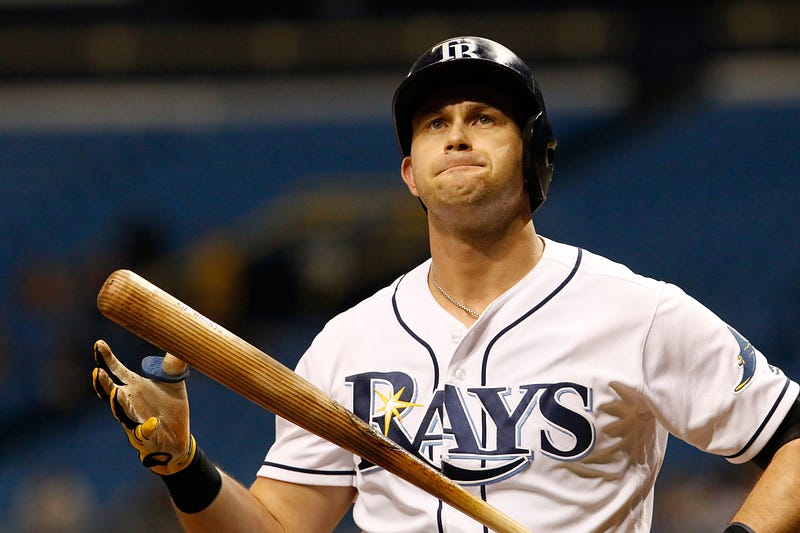
25. Evan Longoria, Tampa Bay Rays. Six years, $99 million guaranteed; seven years, $112 million possible (through age 37)
Longoria’s current contract — about $100 million for the decline phase of a third baseman on a Hall of Fame career track — isn’t wildly out of line. In 2011, Adrián Beltré signed with Texas for six years and $96 million. Inflation — and Longoria being a year younger than Beltré was at the time — might dictate a higher salary, but Beltré’s a slightly better player and Longoria might be taking a hometown discount.
No, Longoria’s on this list because he was the first high-profile player to sign the kind of deal that got copied dozens of times since. In 2008, he signed a six-year, $17.5 million contract with options to take it to nine years and $44.5 million — and I’m sure it’s a coincidence that Longoria, who posted a .921 OPS in 2007 across Double-A and Triple-A while the Rays lost 96 games, played only six big league games before he sold off the first nine years of his career for a little less than what Alex Rodriguez made in two years. That first contract, which allowed the Rays to squeeze 46.4 WAR out of the best player in franchise history for $44.5 million, just expired this past year, and it’s been a hugely influential model for the league ever since it was signed.
Filthy Rich but Still Underpaid
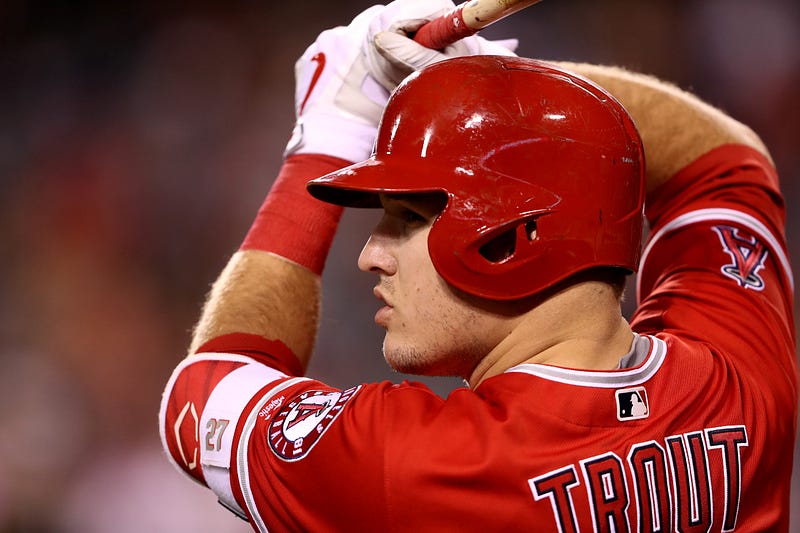
24. Clayton Kershaw, Los Angeles Dodgers. Four years, $131 million guaranteed; four years, $135 million possible (through age 32)
23. Mike Trout, Los Angeles Angels. Four years, $119 million (through age 28)
Kershaw will make more than $30 million this year, with an opt-out after 2018; and Trout’s salary jumps up over $33 million a year in 2018, making it the richest contract ever signed by a player with less than three years of service time. Both of them will be able to sign at least one more record-breaking deal before they’re done.
And they’re still underpaid.
Given the economics of baseball, we can only fathom so many levels of stardom — Kershaw’s making about as much as David Price over the length of his deal, because a no. 1 starter apparently has a certain value. Except Kershaw’s way better than Price, and indeed every other pitcher in baseball; the same goes for Trout and position players. Not only should Kershaw make 75 percent more than (not to pick on Rick Porcello, but) Rick Porcello because he’s 75 percent better; he deserves a premium because there are at least a dozen pitchers in baseball like Porcello, but nobody else like Kershaw.
Considering the cost of a win on the free-agent market (between $8 million and $9 million), plus a premium for the scarcity of such players, these guys would probably be making in excess of $80 million a year if they were compensated fairly.
Bad Now, but It’ll Be Over Soon
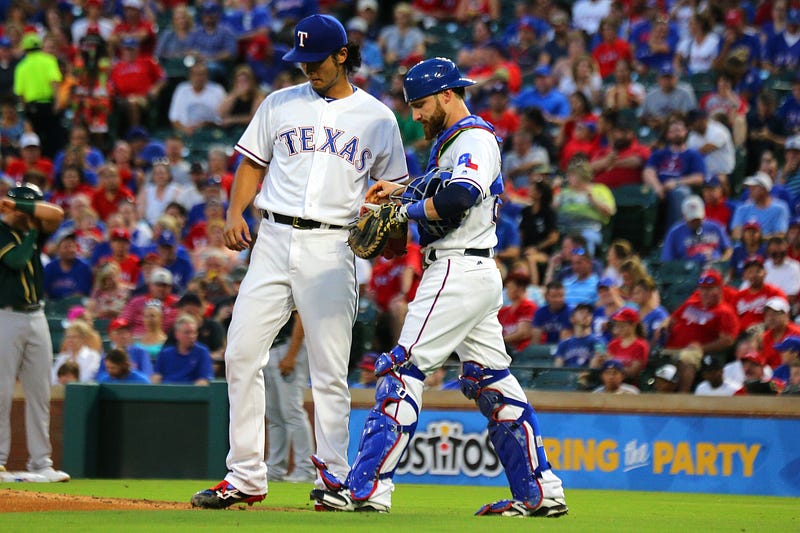
22. Yu Darvish, Texas Rangers. One year, $11 million (through age 30)
21. Jonathan Lucroy, Texas Rangers. One year, $5.25 million (through age 31)
20. Brian Dozier, Minnesota Twins. Two years, $15 million (through age 31)
Despite not coming in through the draft, Darvish still had his initial bargaining power cut when he negotiated his current deal with the Rangers thanks to the posting system, which allowed him to negotiate with only one team. So not only did the Rangers have Darvish over a barrel, they’d also paid the Nippon-Ham Fighters $51.7 million for Darvish’s rights. So of the six years and roughly $111 million the Rangers paid — perhaps still an underpay for a 25-year-old who happened to be the greatest power pitcher Japan had ever produced — Darvish only saw half. If a 30-year-old with a career 129 ERA+ and the best K/9 of any starting pitcher in MLB history hit the free-agent market right now, he’d probably triple Darvish’s $11 million salary.
Lucroy and Dozier took similar career paths. Since both were undersized college hitters who developed late, their respective teams — both small-market clubs — were no doubt thrilled when they developed into competent starters, and so they bought out their arbitration years at the rate you’d expect for a starter on a non-contending team. Then they kept developing through their late 20s, and Lucroy and Dozier are now both legitimate stars likely to command big raises in the near future.
Potential Burnouts
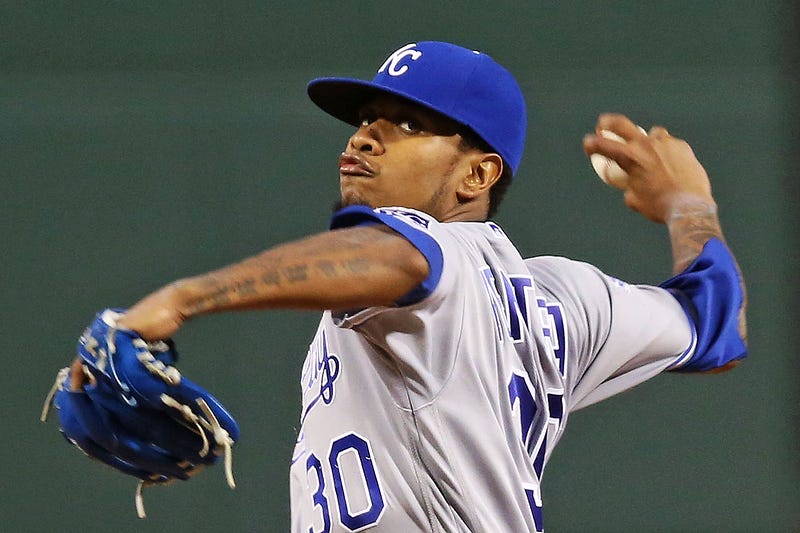
19. Yordano Ventura, Kansas City Royals. Three years, $20.25 million guaranteed; five years, $51.25 million possible (through age 30)
18. Wilson Ramos, Tampa Bay Rays. Two years, $12.5 million guaranteed; two years, $18.25 million possible (through age 30)
Ventura is one of the more confusing players in the game. When he came up in late 2013, he looked like a seventh grader, but threw 100 miles per hour with ease. The risks of a profile like that — injury, fatigue, not getting downward plane on the fastball — might have inspired Ventura to sign this deal in April 2015 and put a guaranteed $23 million in the bank early in case he got hurt or became a reliever.
Over the past two years, Ventura’s velocity’s gone down (though his fastball still averages almost 97 mph) and he’s put up oddly undramatic numbers: Since 2015, he’s made 60 starts for 349.1 innings, with an ERA+ of 100 and a 7.7 K/9. Put that in Google Translate and you’ll get “no. 3 starter.” And in an age where Jeremy Hellickson gets a qualifying offer, a no. 3 starter is worth way more than $51 million over five years, with less than half of it guaranteed.
Meanwhile, Ramos has had a tough time in the big leagues between literally being kidnapped in 2011 and suffering a long string of injuries. Most recently, he tore the ACL in his right knee after having suffered the same injury in 2012. That not only might have swung the Nationals’ playoff loss to the Dodgers, but it kept Ramos from cashing in on a career year — he posted a 123 OPS+ at age 28 — in a seller’s market for free-agent catchers. Instead, Ramos will miss most of 2017 while settling for an open-market deal bad enough to make this list this week, and delaying his big payday (if it ever comes) by two years.
How Much Do You Really Trust Your Defensive Metrics?
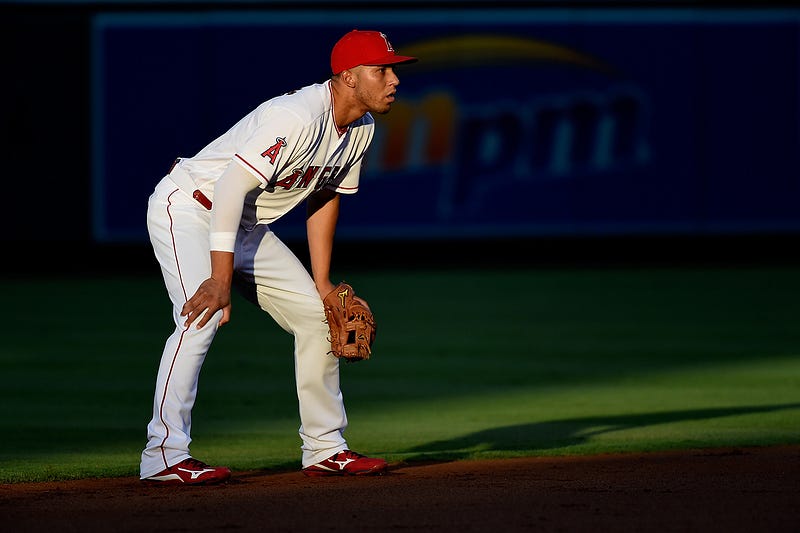
17. Andrelton Simmons, Los Angeles Angels of Anaheim. Four years, $47 million (through age 30)
16. Adam Eaton, Washington Nationals. Four years, $19.9 million guaranteed; five years, $40.9 million possible (through age 32)
The Braves signed Simmons to this deal in hopes of locking up the best defensive shortstop in baseball long-term while his bat developed. With an 86 career OPS+, that hasn’t exactly happened, but his glove makes him worth almost $12 million easily. The question is how much the defensive production is actually worth. If it’s two wins a year, this isn’t that bad a contract. If it’s three, or even five (as Baseball-Reference had it rated in 2013), he’s hugely underpaid.
Eaton also has a lot of noise surrounding his value. The difference between his defensive value in center field in 2015 (when he was, to be fair, playing through a shoulder injury) and in right field in 2016 was close to 30 runs. But unlike Simmons, he has a steady .360-ish OBP to fall back on, and anyone who posts a .360 OBP and hits in front of Bryce Harper is going to score a ton of runs. Even though the Nationals overpaid for Eaton with the prospects they sent to Chicago, they’ll pay him far less than he’s worth over the next several years.
Good Players Getting Paid Like Kind of Crappy Players
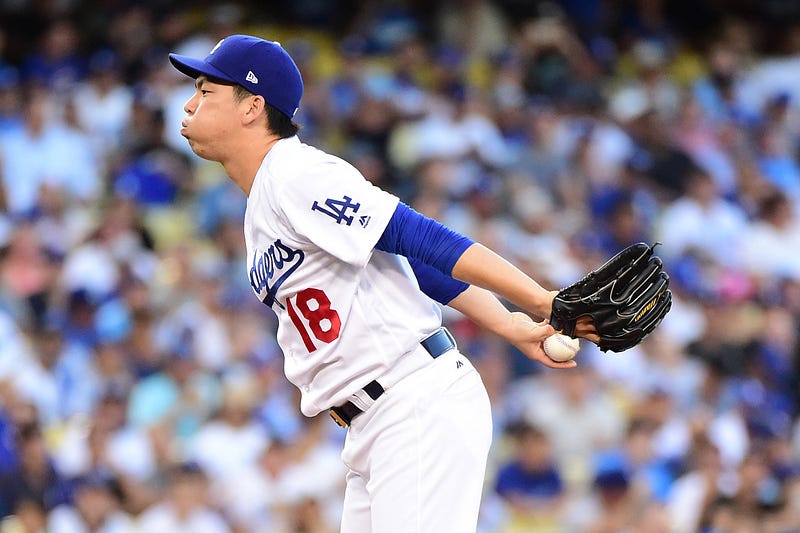
15. Paul Goldschmidt, Arizona Diamondbacks. Two years, $21.75 million guaranteed; three years, $34.25 million possible (through age 31)
14. Salvador Pérez, Kansas City Royals. Five years, $52.5 million (through age 31)
13. Kenta Maeda, Los Angeles Dodgers. Seven years, $21 million guaranteed; seven years, $92.05 million possible (through age 35)
12. Christian Yelich, Miami Marlins. Five years, $48 million guaranteed; six years, $61.75 million possible (through age 30)
If you’re worried that Goldschmidt wasn’t the same player in 2016 that he had been in the three years prior, that’s absolutely reasonable, particularly because when big, power-hitting first basemen start to slip, they frequently fall all the way off the cliff soon after. With that said, Goldschmidt, who turned 29 in September, was still a roughly five-win player last year. He still posted a 134 OPS+ and led the National League in walks, and he’s got about the same contract as Kendrys Morales, who is not only much worse, but four years older.
Like Longoria, Pérez signed an under-market deal early into his major league career (five years for $7 million with three option years). Then the Royals — a small-market team owned by former Wal-Mart CEO David Glass, the Steve Jobs of wage suppression — tore up the option years to pay Pérez, well, not anything close to market value, but a wage that wouldn’t have the revolutionary vanguard climbing the walls of Kauffman Stadium by mid-2018.
Maeda’s deal is one of the weirdest in baseball. It not only has the standard discounts for Japanese pitchers — the “will the stuff translate?” discount and the “we’re paying an eight-figure posting fee” discount — but because Maeda’s physical revealed what doctors might call a “janky elbow,” the majority of the eight-year contract will pay out in innings-pitched and starts bonuses, putting the risk on Maeda.
Through one year, it turns out Maeda’s elbow has not been janky and his stuff translates just fine, to the tune of 179 strikeouts over 175.2 innings and a 112 ERA+ in 32 starts. Since the deal ends after Maeda’s age-35 season, he won’t have a shot at a second lucrative deal when it’s done. And even if he’s healthy and effective through the end of the deal, he’ll only make about $92 million more, while comparable midrotation starters make at least 50 percent more. But at least he’s got it written into his contract that he gets to wear no. 18.
Yelich’s deal is less confusing. Right after locking up The Mighty Giancarlo Stanton, the Marlins signed the guy TMGS is supposed to drive in to a seven-year deal that would keep him in Miami through age 30. At that point, Yelich was still kind of a poor man’s Jason Heyward, a high-OBP corner guy with a good glove but no power. Then in 2016 he tripled his home run total from seven to 21 and posted a 133 OPS+. As a skinny kid with a bonkers hit tool who just turned 25, he might not be done improving. Since he came up when he was so young, Yelich could have hit free agency after his age-27 season, at which point Heyward’s eight-year, $184 million contract would’ve felt like a good starting point. Instead, Yelich gives up three prime free-agent years for a $9.75 million salary in his sixth full big league season, which he might’ve been able to beat in arbitration anyway.
Pirates Outfielders
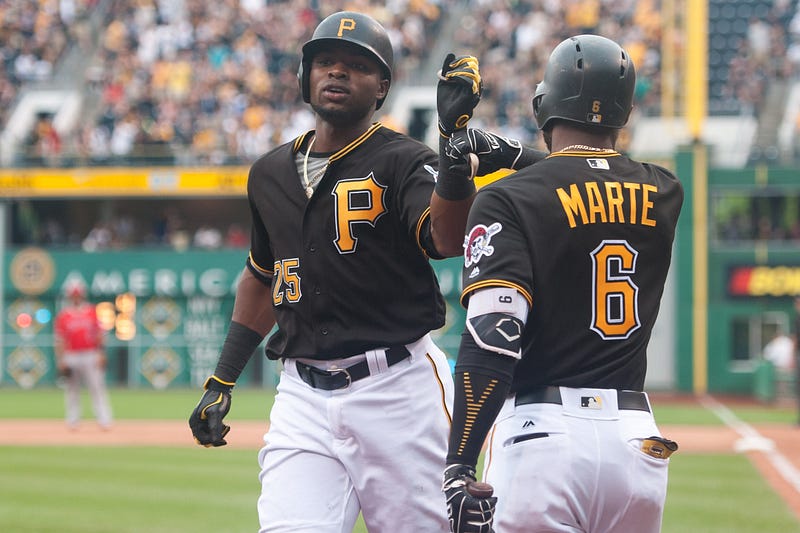
11. Gregory Polanco, Pittsburgh Pirates. Five years, $32 million guaranteed; seven years, $59 million possible (through age 31)
10. Starling Marté, Pittsburgh Pirates. Three years, $24.5 million guaranteed; five years, $48.5 million possible (through age 32)
Contracts like these are the Pirates’ specialty. At any point in the past few years, Andrew McCutchen would have made this list, and even after his alarmingly mediocre 2016 season, McCutchen’s $14 million salary next year could still end up being a huge coup for the Pirates.
McCutchen’s wingmen are on contracts whose unjustness requires very little explanation. In four full seasons, Marté’s never played fewer than 129 games, posted an OPS+ below 113, stolen fewer than 30 bases, or been worth less than 4.9 WAR. Meanwhile, the Pirates have him locked up likely through his prime for less than $10 million a year on average — not only reducing his pay now, but kneecapping his earning power on his next contract. Polanco, who’s three years younger, will make even less money on average over a longer period of time.
It’s worth noting that Polanco and Marté are from the Dominican Republic, and McCutchen’s from a low-income family in Florida and didn’t go to college in part because he couldn’t afford it, even with a partial baseball scholarship. In contrast, American amateurs from wealthier families, like Mark Appel and Daz Cameron, can play hardball while negotiating a draft bonus, and players with a college education who don’t represent their entire family’s best chance out of a low-income bracket — Kris Bryant and Gerrit Cole come to mind — risk less by playing through arbitration and maxing out after six years. This isn’t a hard-and-fast rule by any stretch of the imagination, but it shouldn’t come as a shock that you’re probably less likely to be exploited if your parents were wealthier.
Pitchers Who Signed Way Too Soon
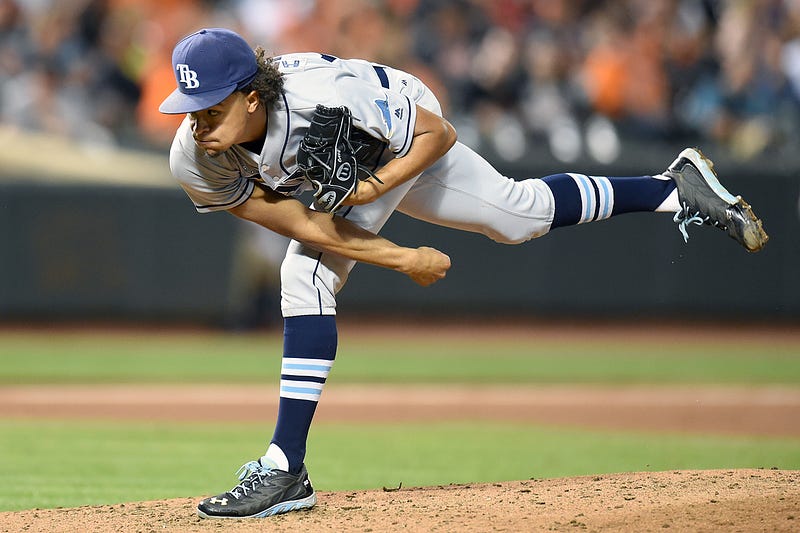
9. Julio Teheran, Atlanta Braves. Three years, $26.3 million guaranteed; four years, $37.3 million possible (through age 29)
8. José Quintana, Chicago White Sox. Two years, $16.85 million guaranteed; four years, $40.35 million possible (through age 31)
7. Carlos Carrasco, Cleveland Indians. Two years, $15.16 million guaranteed; four years, $41 million possible (through age 33)
6. Chris Archer, Tampa Bay Rays. Three years, $20.25 million guaranteed; five years, $38.5 million possible (through age 32)
5. Madison Bumgarner, San Francisco Giants. One year, $13 million guaranteed; three years, $43.5 million possible (through age 29)
4. Corey Kluber, Cleveland Indians. Three years, $32 million guaranteed; five years, $66.5 million possible (through age 35)
3. Chris Sale, Boston Red Sox. One year, $13 million guaranteed; three years, $40.5 million possible (through age 30)
It feels like Teheran has been in the Braves’ rotation since about 1998, but he’s somehow still just 25. He probably won’t ever win a Cy Young, but we used to say that about Porcello, and look how that turned out. In four full big league seasons, Teheran has made at least 30 starts every year and averaged 199 innings and a 113 ERA+ with a 7.8 K/9. When Porcello signed his four-year, $82.5 million extension with Boston, he was a year older than Teheran and had completed six seasons with a career ERA+ of 97 and a K/9 of 5.5 over an average of 179 innings. In two seasons with the Red Sox, Porcello’s been almost exactly the same pitcher as Teheran, averaging 198 innings a year, with a 7.7 K/9 and 113 ERA+. And yet Teheran’s going to make less than half as much over his next four years as Porcello will over his current deal with the Red Sox. Still, Teheran’s subject to only one option year, and if he stays healthy, he will hit free agency for his age-30 season, so it could be worse.
I’m not sure anyone thought Quintana would be this good, but over the past four years, he’s averaged at least 200 innings, never dipping below a 113 ERA+ in any season. But because he’s done it for bad White Sox teams in the shadow of Chris Sale, he’s flown under the radar, and he’s getting paid like it. He’s put up similar numbers to his fellow Colombian, Teheran, and is on a similar contract, but Quintana’s contract is worse because (1) a year and about $10 million less of it is guaranteed and (2) Quintana will be two years older when he hits free agency, which will make him significantly less attractive to future employers than Teheran.
Like Dozier and Lucroy, Carrasco is a late bloomer. Carrasco is so old he was close to the majors when Cleveland acquired him from the Phillies for Cliff Lee back in 2009, and it took him five years in the Indians organization for him to develop into a good big league starter. Since 2014, Carrasco has a 134 ERA+ in 464 innings, and the Indians are getting a very good starting pitcher for what you would pay a good middle reliever. Sure, he got hurt last year, but it was a broken hand, not a torn labrum or UCL. There’s no particular reason to think he won’t earn all $41 million left on his deal and deserve another $41 million on top of it.
Archer followed the Rays tradition of signing a pre-arbitration extension for peanuts and turning his first few seasons of free agency into team options. Longoria, Moore, and James Shields did it, too. And like Shields, he’ll be through his age-32 season before he hits free agency, and he’ll probably lose tens of millions of dollars compared to what he would have made if he had hit the market two years sooner.
Bumgarner made his big league debut shortly after his 20th birthday and signed this extension when he was 22. The contract looked decent at the time — Bumgarner had been the Giants’ fourth-best starter the year before, behind Tim Lincecum, Matt Cain, and Ryan Vogelsong — and even though he had a career 118 ERA+, he was a young pitcher five years from free agency, who had taken a weird delivery through a lot of innings over the previous two seasons. But if he hadn’t, he would be a free agent right now, after 1,072 seamless innings over the past five years, plus the 2014 playoff run — and he’s only 27. If Bumgarner had played through his arbitration years he’d make almost enough money this offseason to buy a team for himself.
Kluber, a late bloomer who didn’t qualify for an ERA title until his Cy Young season in 2014, signed his extension the following April, five days before he turned 29, still a year from arbitration and four years from free agency. When Kluber signed, he not only had no leverage but almost no track record. Since then, he’s posted two more excellent 200-plus-inning seasons and tacked on a nearly Bumgarnerian playoff run in 2016. Forget about what he could make as a free agent — he could add at least $20 million to an extension with the Indians.
Which brings us to Sale, who signed his extension just before he turned 23, before he could even hit arbitration and with only one season as a starter under his belt. Coming into the 2013 season, I would have thought it likely, given Sale’s cringe-inducing delivery, that he would have had his left arm amputated by now. Instead, he’s thrown more than 800 innings over the past four years, with four straight All-Star appearances and four straight top-five Cy Young finishes. Still, the Red Sox are going to pay Sale about $9 million less over the next three years than the Dodgers are going to pay Rich Hill, and if Sale’s arm does come off, they’ll only be on the hook for a third of it.
Sue Your Agent
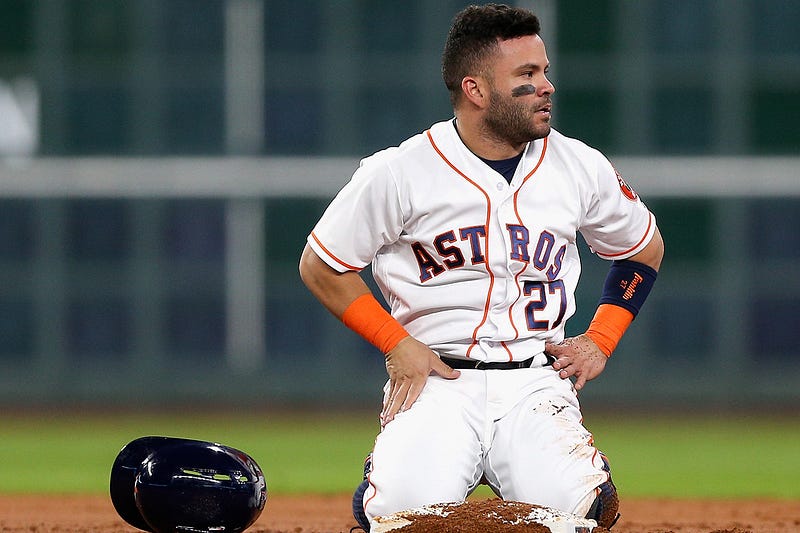
2. Anthony Rizzo, Chicago Cubs. Three years, $27 million guaranteed; five years, $59 million possible (through age 31)
1. José Altuve, Houston Astros. One year, $4.5 million guaranteed; three years, $17 million possible (through age 29)
Both of these guys signed their contract extensions before they hit arbitration — and before they changed from Anthony Rizzo and José Altuve to ANTHONY RIZZO and JOSÉ ALTUVE.
Rizzo, who’s probably the best first baseman in the National League right now, is going to make $7 million this year after back-to-back top-five MVP finishes, but at least he’ll make $16.5 million a year if the Cubs pick up all of his options — even if entering the free-agent market for the first time as a 32-year-old first baseman isn’t going to help Rizzo out that much.
Altuve, on the other hand, was probably the third-best position player in the American League this past year, and he’s going to make $4.5 million in 2017, or 75 percent of what the Astros are going to pay Tony Sipp, a relief pitcher who posted a 4.95 ERA last year. FanGraphs, despite its WAR model being a full win lower on Altuve than Baseball-Reference’s, says Altuve was underpaid last year by about $50 million.
So far, the Astros haven’t overwritten the two team-option years like the Royals did with Pérez, or signed Altuve to a nine-figure extension like the Rays did with Longoria — and the Royals and Rays are not exactly teams known for their magnanimity when it comes to player salaries. At some point, “finding market inefficiencies” turns into “exploiting your workers,” and at some point past that you’ll find Altuve.





